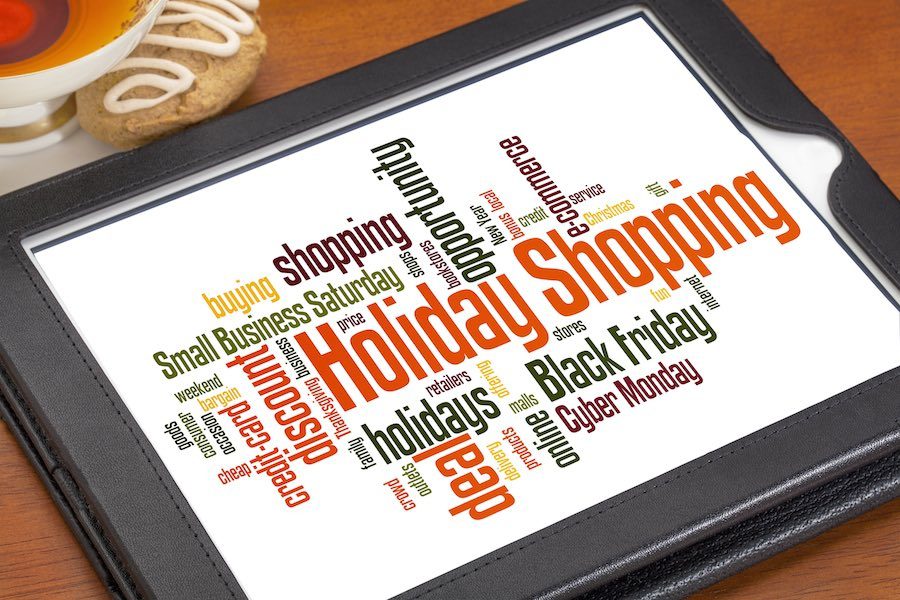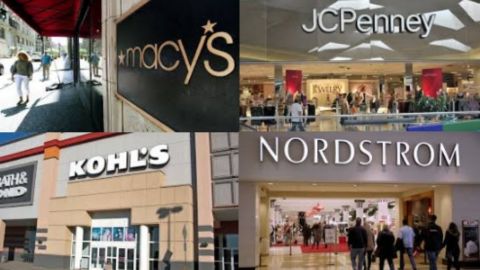Sales results from the 2014 Thanksgiving weekend further support retailers’ need to focus on a consistent brand message across all channels year-round, rather than comparing in-store sales on Black Friday to online sales on Cyber Monday.
“This year is likely to be the first time in nearly a decade that Black Friday won’t be the biggest shopping day of the holiday season in terms of traffic and sales,” reported Robert Passikoff, Founder and President of Brand Keys, Inc., in the firm’s 20th Annual National Holiday Shopping Survey.
“This is due in part to the fact that retailers offer deals year-round and consumers have taken that to heart, and more stores are open on Thanksgiving Day,” Passikoff explained. “With the expansion of Black Friday into an entire season (aka November) more people are shopping on — or prior to — Thanksgiving.”
Looking at results from Thanksgiving weekend, many retailers may be discouraged. Total spending fell approximately 11% year-over-year to $50.9 billion, according to the National Retail Federation (NRF).
But e-Commerce sales increased 32% to $766 million on Thanksgiving Day and 26% to $1.2 billion on Black Friday, comScore reported.
While online purchases are increasing more rapidly than brick-and-mortar sales, the store continues to be a vital component of the overall brand experience for shoppers. In fact, there were 233.3 total shopping trips over the Thanksgiving holiday weekend, according to the NRF.
One trend that crosses both online and in-store is gift card purchases. Gift card sales — both plastic and digital — are expected to top all previous records during the 2014 holiday season. According to NRF’s Gift Card Spending Survey, the average person buying gift cards will spend $173, up from $163 in 2013. Total spending is expected to reach close to $32 billion, which is an 83% increase since NRF began tracking consumers’ intentions to buy gift cards as holiday gifts in 2003.
Gift recipients are on board with the trend. In an October NRF survey, 62% of consumers said they would like to receive a gift card, making gift cards the most requested gift item for the past eight years.
Holiday Results Q&A With Scot Wingo, CEO, ChannelAdvisor
Amazon, Large Format Retailers Win Out In Holiday Predictions
If you’re placing bets on which retailers will rack up the most sales during the 2014 holiday season, bet on the obvious. Amazon shoppers are planning to spend 9.9% more this year compared to last year, according to Prosper Insights & Analytics, in its report, titled: Holiday 2014: Retailers To Watch.
Other retailers expected to fare well this year include:
- Nordstrom, up 7.5%;
- Walmart, up 5.3%;
- Costco, up 5.2%;
- Kohl’s, up 3.0%;
- Best Buy, up 1.3%.
Pricing And Promotions Heat Up Competition As The Thermometer Drops
To remain competitive in the current, consumer-driven marketplace, retailers can’t wait around to launch their best prices and deals during the holidays.
As explained by Passikoff of Brand Keys: “As we predicted, with the intense competition for consumer dollars, department stores and specialty shops had to become more aggressive on deals, promotions, and operating hours this holiday season, and those realities are showing up in the real marketplace and on retailers’ bottom lines.”
Hopefully retailers will learn from their price and promotion inconsistencies last year, industry experts noted. “There was no consistent strategy or head-on competition among the retailers,” reported Amos Peleg Co-Founder and CEO of Upstream Commerce. “The average discount rate attained at both Amazon and Zappos (at different times in the scale), was 2.8%, but was only 0.5% for Macy’s.”
Also during the 2013 season, Upstream Commerce examined pricing of the 20 largest athletic shoe brands at Amazon, Zappos and Macy’s, finding that “each lowered its prices to start the holiday shopping season; and while Amazon discounted the most on Black Friday, it then raised prices the most for Cyber Monday.”
Peleg offered three key takeaways when it comes to holiday pricing strategies:
- “Each retailer appears to dance to its own drummer with no consistently obvious strategy in relation to each other.”
- “Although different products are considered, Amazon exhibits the same type of behavior each year, where it raises prices on Cyber Monday.”
- “While there may be a smaller set of ‘show’ products that are actually being discounted, it’s probably a myth that retailers provide huge discounts across the board during the holiday season.”
To help retailers determine where they stand in an endless sea of discounts and promotions, they can look to a WalletHub survey of 5,525 deals from the 2014 Black Friday ad scans of 21 of the largest U.S. retailers:
- JCPenney has the highest overall discount rate at 65%. Costco has the lowest at 21%.
- Jewelry is the most discounted category at 58%. Electronics & Computers are the least discounted at 30%.
- The average discount for Black Friday is 39%.
- The Toys category has the most discounted items, representing 26% of all offers. The Consumer Packaged Goods category has the smallest, with only 1.3% of all offers.
Following is a breakdown of additional spending trends and takeaways from Thanksgiving — also called Gray Thursday — to Cyber Monday.
Thanksgiving Day Shopping Becomes A Holiday Hit, Boosts Store Sales 24%
Thanksgiving Day has evolved into a shopping holiday over the past three years. Not only did top retailers such as Walmart and Target open their doors earlier on Thanksgiving Day, but they also started their holiday doorbusters earlier than ever.
Although industry experts argued whether opening on Thanksgiving would help or hurt retailers, results are pointing to the former. Total in-store sales for the day were up 23.7%, with holiday shoppers spending a total of $3.19 billion, according to ShopperTrak.
The early openings were a success, bringing in12% more store traffic on Thanksgiving than 2013, according to data from Shopkick. In fact, 30% of all Black Friday store visits happened before midnight Pacific Time on Thanksgiving Day, representing an increase above 18% in 2013, 16% in 2012 and 13% in 2011. The data illustrated that in-store shopper traffic peaked on Thanksgiving Day at 6 p.m. PT, which is two hours earlier than the 8 p.m. peak time in 2013.
Despite the boost in store traffic and sales, e-Commerce and mobile shopping dominated Thanksgiving Day, with the IBM Digital Analytics Benchmark reporting that combined online sales increased 14.3% over 2013.
Online sales from desktop and laptop computers increased 32%, reaching $1.01 billion throughout the day, according to data from comScore. Online average order values (AOVs) on Thanksgiving Day were $179.59 per order, which was the highest total over the entire holiday weekend, according to Monetate.
Mobile traffic and sales experienced the highest year-over-year increase, according to the IBM Digital Analytics Bench report. Mobile traffic outpaced traffic from computer devices for the first time in 2014, with smartphones and tablets accounting for 52.1% of all online traffic. Mobile sales, on the other hand, accounted for almost one third (32.3%)of all online sales, representing a 25.4% year-over-year increase.
Mobile web sites accounted for 93% of retail revenue throughout the day, with only 7% coming from retailers’ apps, according to data from Skava.
After consumers finished their turkey dinners, they also turned to social networks to search for their favorite brands and keep track of discounts and offers. The IBM Digital Analytics Benchmark concluded that Facebook referrals drove an average of $107.73 per order, while Pinterest referrals averaged $95.24 per order.
Black Friday Underperforms Due To Thanksgiving Openings
While Black Friday has evolved to become a flagship spending day, Thanksgiving Day appeared to shake up spending patterns and consumers’ overall enthusiasm for the shopping holiday. Overall, 86.9 million shoppers either shopped in-store or online on Black Friday, a 5.5% decrease from 2013, according to data from NRF.
Total Black Friday spending in physical stores dropped 6.8% year over year to $9.10 billion, ShopperTrak data noted, while in-store traffic fell 6.6%, according to the U.S. Retail Benchmarks Report from Euclid Analytics.
E-Commerce fared more positive for retailers, with Black Friday online sales increasing 20.6% from 2013, according to a blog from Custora. Research from comScore indicated online sales from desktop and laptop computers alone jumped to $1.5 billion.
Online retailers in the Health & Beauty and Home Goods categories experienced the highest sales growth during Black Friday. Sales for Health & Beauty merchants increased 56.9% over 2013, while Home Goods stores experienced a boost of 43.2%.
Similar to Thanksgiving Day, more consumers were browsing and buying on their mobile devices on Black Friday. Approximately half (49.6%) of all online traffic on Black Friday came from mobile devices, a 25% year-over-year increase from 2013. Mobile also accounted for 27.9% of total online sales, up 28.2% from the 2013 results, according to the IBM Benchmark.
While social media as a whole drove only 1.7% of sales, email marketing had a major impact in driving online sales on Black Friday.More than one quarter (27.3%) of sales were attributed to retail emails, according to IBM. These email messages helped target customers and were sent less frequently than in the past. Retailers sent an average of 5.3 emails to shoppers this year, 11% less than Black Friday 2013.
Cyber Saturday Picks Up Steam
Although many retailers choose to take their time to reload in the days between Black Friday and Cyber Monday, in 2014 some decided to jump in to a cyber-themed weeks on Nov. 29 — leading to numbers well over last year’s for Cyber Saturday. Amazon, for example, rolled out is Cyber Monday deals early.
This proved to be a hit with customers, and sales were up 45.9% over 2013, according to ChannelAdvisor. eBay, meanwhile, was up 14.9% over last year, and Google shopping jumped 19.7%. ChannelAdvisor reports that total e-Commerce growth year over year was 27%.
Data released by Monetate, a retail personalization technology provider, paints a similar picture. According to the company, shoppers initiated 30,518,366 sessions on e-Commerce sites on Nov. 29, which represents a 10.33% spike over Cyber Saturday 2013.
Mobile played a key role in the traffic increase, with both smartphone traffic — up 51.9% — and revenue — up 49.1% — well over last year’s numbers. In total, tablets and smartphones accounted for 43.98% of all online traffic and 28.6% of sales. Other findings released by Monetate include:
- The average order value of all purchases was $150.77;
- Revenue per e-commerce session increased 14.8% year over year; and
- Conversion rates increased 10.3% year over year.
“The Black Friday hangover impacted retailers in a very positive way as there were significant spikes in traffic, revenue and conversions on the Saturday after Thanksgiving,” said Lucinda Duncalfe, CEO, Monetate. “Mobile continues to drive this trend, as it appears that shoppers browsing on Black Friday decided to make purchases via smartphones and tablets on Saturday as many deals and specials continued online.”
Despite the gains, data analyzed by the Salesforce Marketing Cloud indicated that shoppers might have been ready to take a break. Social media conversations concerning holiday shopping dipped to 606,325 on Cyber Saturday. Apple led the way in social chatter on Cyber Saturday with 10,000 posts, representing a 456% year-over-year increase. Walmart while still coming in second with 8,700 post, was 21% down over last year’s social conversations. The number one topic of those discussions was Cyber Monday, which suggested positive trends for e-Commerce sites leading into Dec. 1.
Has Cyber Monday Lost Its Luster?
Cyber Monday has acquired a history of having the best online sales and deals. But this year, as retailers started their discounting tactics earlier and earlier, was that still the case? Moreover, were consumers just as eager to shop on Cyber Monday, or was their time and attention elsewhere?
Based on the projected individual holiday spend of $855, Brand Keys estimated that Cyber Monday would only account for 35% of total spending. The Cyber Monday Expectations Survey from Prosper Insights & Analytics, also indicated that 126.9 million consumers planned to shop on Cyber Monday, a slight decrease from 131.6 million in 2013.
“For today’s shopper, every day is ‘Cyber Monday,’ and consumers want and expect great deals, especially online, throughout the entire holiday season – and they know retailers will deliver,” said Matthew Shay, President and CEO of NRF. “Retailers will still offer unique deals exclusive to Cyber Monday, but consumers also know shopping on Cyber Monday won’t be their last chance to find low prices and exclusive promotions.”
Supporting Shay’s point, research from ShopSavvy indicated that some of the deals released on Cyber Monday are just hype, and truly are not as substantial as they suggest. Data from the top 100 retailers concluded that the Electronics category had the steepest discounts, with NewEgg offering 71% off on Cyber Monday. Men’s Warehouse came in second, offering a 58% discount on Cyber Monday. Across all retailers across categories, Nordstrom offered the most discounts, slashing prices on 20,057 products.
However, results have shown something different entirely. Desktop online spending on Cyber Monday reached $2.04 billion, representing the heaviest online spending day in history, according to comScore. This is the first time in e-Commerce history that online sales surpassed $2 billion in a single day.
“With more than $2 billion in online buying on Cyber Monday to cap an exceptionally strong five-day period since Thanksgiving, the online holiday shopping season is clearly going very well at the moment and is currently running ahead of forecast,” said Gian Fulgoni, Chairman Emeritus at comScore. “Any notion that Cyber Monday is declining in importance is really unfounded, as it continues to post new historical highs and reflects the ongoing strength of online this holiday season. Varying reports have also indicated weakness in the consumer economy due to flagging brick-and-mortar sales over the holiday weekend, but what we may really be seeing is an accelerating shift to online buying as mobile phones spur increased showrooming activity. The data we’re seeing suggest it may be more a change in shopping behavior than a lack of consumer demand.”
Results from the IBM Digital Analytics Benchmark also pointed to Cyber Monday as the most popular day for consumers to shop, with online sales growing by 8.5% year over year. Mobile traffic also grew, accounting for 41.2% of online traffic, up 30.1% over 2013. Mobile sales also surged, reaching 22% of total Cyber Monday online sales. Although online traffic and sales surged on Cyber Monday, average order value experienced a slight downturn, falling 3.5% year over year to $124.21.
Retailers Get On Consumers’ “Nice Lists” Across All Channels
Sales trends and results confirm that consumers are leveraging a variety of channels to browse and buy. As a result, a multitude of retailers ramped up their omnichannel marketing and engagement tactics to make holiday shopping more seamless and enjoyable. Here are a few standout examples:
- Target is partnered with Google on the Art, Copy & Code project, which is designed to surprise and delight customers during the holiday season. Bullseye’s Playground is a mobile game experience that features the Target bull terrier mascot and other characters. In Target stores, guests can use Google’s Project Tango Development Tablet to interact with the Playground, which is presented as a 3D winter playground. The game also is available on personal mobile devices through Target.com/play. For every game played with Bullseye’s Playground, Target will donate $1 to St. Jude’s Children’s Research Hospital.
- Rue La La saw a surge in mobile sales and traffic through Thanksgiving weekend. With more than 13 million members, mobile accounts for 50% of total sales. The retailer saw mobile traffic peak at 8 p.m. ET. To celebrate the start of the holiday, Rue La La implemented a variety of campaigns, including the 12 Gift Steals program, which was a five-day series highlighting must-have gifts at exclusive pricing.
- Macy’s held a variety of doorbusters and contests to pique consumer interest and drive conversions. Black Friday deals started at 6 p.m. on Thanksgiving Day, and consumers had the chance to win digital gift codes to be used for Black Friday purchases. Using the Macy’s mobile app, shoppers scanned in-store QR codes to instantly win gift codes worth $10, $20, $50 or $250. Sharing details on overall performance for the weekend, CEO Terry Lundgren said in a Fortune article: “So far, people are gravitating to doorbusters — that has got their attention. There’s so much information online, so they’re doing that research and going right for those doorbusters.”
The retailers that landed on consumers’ “naughty lists” were the once who didn’t ensure quality e-Commerce performance during one of the busiest weeks of the year. Best Buy, BaubleBar and HP all experienced site outages, while Cabela’s and Foot Locker experienced some instability throughout the weekend.
What’s In Store For The Rest Of December?
The five day crunch between Thanksgiving and Cyber Monday has now passed, but with a recent Credit Karma survey stating that three out of four shoppers avoid Black Friday and Cyber Monday, there’s still a long way to go before consumers wrap up 2014’s holiday shopping season.
The burning question now is how will the rest of the holiday season measure up? Cyber Monday got December up to a rousing start, and early projections for the rest of the month should encourage retailers.
In total, analysts at Mintel predict a 3% increase in spending throughout December. While this number does not beat last year’s 4% year-over-year increase, it represents a total spend worldwide of more than $57 billion, with nearly 13% coming from e-Commerce.
Heavy shopping days remain in December, according to ShopperTrak – including the Super Saturday (Dec. 20), which the location-based analytics vendor predicts to be the heaviest in-store shopping day of the holiday season. Other dates to watch include Free Shipping Day 2014 (Dec. 18) and the second Saturday before Christmas (Dec. 13). In fact, ShopperTrak predict six of the top ten shopping days of the 2014 holiday season are still to come.
“While the holiday season is underway, it’s not too late for savvy retailers to still capture their piece of the holiday pie,” said Jeff Rohrs, Vice President, Marketing Insights, Salesforce Marketing Cloud. “Each moment in the customer journey matters just as much as the one that precedes or follows it. By focusing on the present moment at hand and making it unmistakably memorable, retailers can stand out amongst the holiday noise and take the customer one step closer to the next major milestone.”














